#DECODING HINDUISM
Text
Vijñāna-bhairava-tantra
A translation of the Vijñāna-bhairava-tantra (complete but lacking commentary)©2017 by Christopher Wallis aka Hareesh Introductory verse (maṅgala-śloka):“Shiva is also known as ‘Bhairava’ because He brings about the [initial awakening that makes us] cry out in fear of remaining in the dreamstate (bhava-bhaya)—and due to that cry of longing he becomes manifest in the radiant domain of the heart,…

View On WordPress
#ANCIENT INDIA#DECODING HINDUISM#HINDU DHARMA#hindu scriptures#HINDUISM#HINDUISM SCRIPTURES#Lord Shiva#sanatan dharma#tantra#Vijñāna-bhairava-tantra
6 notes
·
View notes
Note
reading material and resources on hindutva fascism please
Hi anon I have this post which has some links
This is about the similarities between white supremacists and Hindu nationalists, this is about Hindutva's love for Israel and this is about caste and Hindutva. You might like Decoding the RSS: Its Traditions and Politics by Raosaheb Kasbe. It has a critique on their foundational text Bunch of Thoughts by leading Hindu nationalist leader M.S. Gowalkar (I've read it and it's literally just a Sanghi Mein Kampf). It also challenges the RSS interpretation of Hinduism
#everytime i get an ask like this i get a jumpscare#NO THEY'RE NO UNWELCOME I'M GLAD YOU GUYS WANT TO LEARN I JUST GET SURPRISED WHEN YOU COME TO *ME*#asks#anon#hindutva
126 notes
·
View notes
Text
Decoding Venus: A Journey Through the Nakshatras
Cancer rashi is considered the most feminine yet all the naks in Cancer rashi are ruled by masculine planets except Ashlesha ruled by Mercury which is a "eunuch" planet.
Similarly, Venus is the most feminine planet but Venusian nakshatras embody true masculinity.
Sexual polarity is imp because men are drawn to women who may outwardly seem feminine and charming but who embody strength and are emotionally masculine. The same way, women are drawn to men who seem outwardly masculine but who are in tune with femininity inwardly; this is what manifests as gentleness, kindness, appreciation for the fine things etc
The opposite of Cancer/4h is Capricorn/10h, 3 nakshatras fall into Capricorn rashi, Uttarshada, Shravana & Dhanishta. But I'll explain their masculinity later.
Now here are some things to consider,
*all Venusian naks are Ugra nakshatras (known for being fierce and cruel)
*all Venusian naks are Manushya gana
*all Venusian naks belong to a fire sign rashi
*all Venusian naks are assigned the cosmic purpose of 'preservation' (in Hinduism, the 3 cosmic functions, creation/preservation/destruction are personified as the Trimurti and different naks are assigned different functions)
The first Venus nak is Bharani and it is the second nak overall. It is important to understand that the Venusian journey begins in Bharani.
Bharani's deity is Lord Yama, the God of Death. He delivers justice and embodies Kala or time. Bharani is symbolised by the Yoni (which means "vulva" in sanskrit) and the word Bharani itself means "to bear".
Birth and death may seem like polar opposites but there is an element of each in the other. To be born is to experience the death of passivity. To die is to experience the birth of the spirit in another form. Lord Yama is associated with divine punishment and dharma but it would be more accurate to say that Lord Yama metes out the treatment that is the result of our own actions. He rules over time, hence what we do in the present is what we will taste in the future as its consequences.
"Time takes the ugliness and horror out of death and turns it into beauty"- Dodie Smith (Bharani Sun)
In French, orgasm is referred to as "La petite mort" which translates to "little death" and it connotes the "brief loss or weakening of the consciousness". Sex and death have had close associations in many cultures.
Hanya Yanagihara's novel 'A Little Life' has the following book cover:
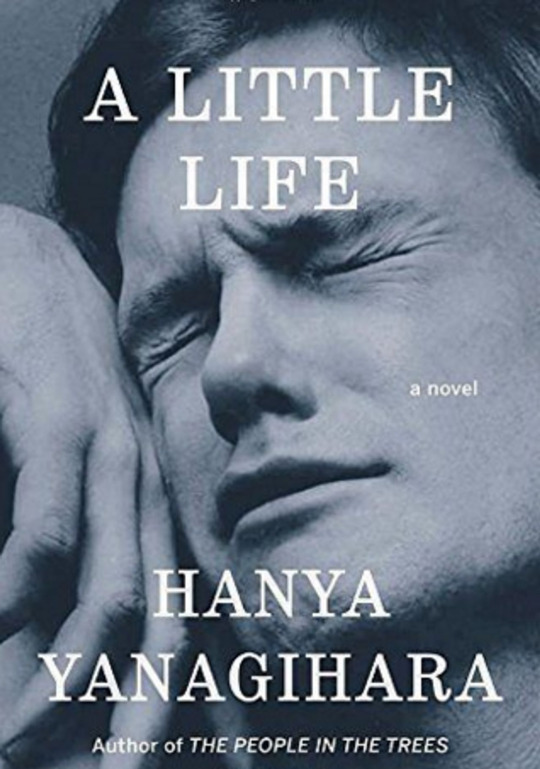
its a photograph by Peter Hujar and is called 'Orgasmic Man'. The author insisted on using this image for the novel's cover because of how its difficult to tell whether the man is in pain or pleasure. This ambiguity is a major theme in the book as well, that deals heavily with sex, trauma, abuse, addiction etc
Hanya Yanagihara has Bharani Moon with Purvaphalguni Mercury & Saturn
The book, you could say explores the dark side of Venus in some capacity. one reviewer described it as "There may never have been a cover that better captures the emotional heart of a story — that is to say the agony and the ecstasy of desire."
"It poses this question: How does one navigate desire when all pleasure to be discovered in the sexual act has been forever stripped away and turned into the stuff of nightmares, and yet the deep longing for love remains?" the conflict between lust and love is a theme that's explored in the works of many Venusian natives.

Ishtar is a Mesopotamian Goddess of love, fertility and war. Like many ancient deities, she was a dualistic deity, associated with life and death, making love and war as well as thunderstorms and food preservation. Ishtar was closely associated with Venus.
Ishtar, though responsible for all life is never considered a Mother goddess. She bore arms as the Goddess of War. She is a paradoxical Goddess figure with many contradictions; sex and violence, fecundity and death, beauty and terror, centrality and marginality, order and chaos. She occupies a liminal space and her influence spans every area of society, she governs all of civilization (think: the preservation aspect of all Venus nakshatras). She was even worshipped as the Goddess of transition between life and death due to her ability to come back from the underworld after she died.
She was widely worshipped in Mesopotamian society as an administrator of justice (see the parallels between Lord Yama and Goddess Ishtar?)
All of this gives us an idea about the highly complex nature of Venus. it amuses me when people think that Venus is some soft uwu nakshatra with bright colored aesthetics and cute lighting when the actual Venusian themes are of violence and war💀💀💀Venusian naks are hardcore af, let me just say that.
“Love is a smoke made with the fume of sighs;
Being purg'd, a fire sparkling in lovers' eyes;
Being vex'd, a sea nourish'd with lovers' tears;
What is it else? A madness most discreet,
A choking gall, and a preserving sweet.”
― William Shakespeare (Bharani Sun)
Bharani is closely associated with birth and procreation, however its cosmic function is "preservation" and not creation. This is because with other naks assigned the cosmic function of creation (ex: Ashwini & Punarvasu) creation must manifest from nothing. It manifests itself on its own; you are the creator and the creation. It is a spiritual and metaphysical concept, so to speak.
But Bharani is not associated with that sort of cosmic creation where the universe manifests itself from nothing, instead its connected to the most primitive and primal of human acts; copulation and procreation. Its directly associated with sex and reproduction. And this is not something that can happen on its own. by nature, procreation necessitates the union of man and woman. its not a symbolic act or a metaphor, it requires two people to get down and dirty. Creation of this sort is necessary to "maintain" or "preserve" our species; it does not arise out of nothing; certain prerequisite conditions have to be met in order for it to take place. this is why Bharani's purpose is "preservation".
from the minute that one is born, we are all on a journey towards death. Lord Yama embodies time because the actions we perform in the present can only be revealed in their true nature with time, i.e, whatever we sow, we reap but this is something that takes time. everything in life can be said to come down to timing. be it lessons learnt or success achieved.
its important to keep in mind that Bharani's aim is Artha
There are 4 aims, namely and each nakshatra has a specific aim assigned to it.
Dharma: doing what you are supposed to do. Fulfilling your soul in daily activities
Artha: generating income and wealth so you can provide shelter and food for your body.
Kama: going after your desires.
Moksha: liberating your soul.
Venus itself is a planet associated with wealth, luxury, abundance, beauty etc
The first Venusian nakshatra is associated with the material aspect of Venus which is creating income and thereby attaining security. If we look at Maslow's hierarchy of needs and correspond it to the 4 aims, we can say that Artha is at the foundational base and Moksha is at the very top with Kama & Dharma located in between the two.
It is very telling that while Venusian nakshatras are split among Artha, Kama & Moksha aims, there is no nakshatra assigned the aim of Dharma, which is doing one's duty. With Venus there is no duty, no obligation, no decree; whatever one does we do out of love, this is the essence of Venus energy.
Therefore Bharani concerns itself with the most basic of needs, which is creating security for itself. It occupies the sign of Aries, ruled by Mars and we can say Mars represents the 'soldier'; it is raw, primitive and only concerned with survival.
As we progress through the other Venus nakshatras, we see how the aims ascend on the hierarchy, finally reaching its peak with "Moksha" or liberation in the final Venusian nakshatra.
Bharani is concerned with the most raw, primal and primitive of acts and located in the very first fire sign of Aries, it is an outcaste nakshatra and is the ONLY venusian nakshatra that is outcaste which is in itself unusual because Venus is concerned with refinement, grace, elan and elegance but the fact that the Venusian journey begins in a nakshatra that is outcaste with the aim of Artha implies one deep cosmic truth; in order for an individual to truly embody Venus and understand the planet's energies, you must first begin at the very bottom and ascend to the top. in Bharani, represented by the womb, we see the aspect of a human being taking physical form and being born, they are not born to riches or pleasures but in the most dire of circumstances, and they must now create security for themselves before they can even think of pursuing pleasures of any kind.
All Venusian nakshatras perform the cosmic function of "preservation" or "maintenance".
this is because they are all Manushya gana nakshatras, and human nature is one that's primarily best suited for this cosmic function over the functions of Creation or Dissolution (for deva gana and rakshasa gana naks).
Creation itself is the feminine principle but "preservation" is inherently masculine. Destruction or dissolution is a different expression of the same feminine principle.
All Venusian nakshatras are also of Pitta (fire) nadi
In Ayurveda, people with pitta are said to usually have a muscular build, be very athletic, and serve as strong leaders. They're highly motivated, goal-oriented, and competitive. They are said to possess an aggressive and tenacious nature.
The second Venusian nakshatra is Purvaphalguni, presided by the deity Bhaga, God of Marital Bliss. Purvaphalguni is symbolised by the front legs of the bed or a swinging hammock, indicating relaxation and comfort.
while Bharani was concerned with birth and death, in Purvaphalguni the association is with the sexual act itself.
Purvaphalguni's aim is Kama (desire) and this nakshatra is associated with love, romance, wealth, luxury etc.
Bharani's yoni animal was the elephant, a large yoni animal signifies the immense sexual appetite of the native but also the capacity for a certain breadth of experiences👀 with Purvaphalguni, the yoni animal is a rat, which is widely considered to be the most sexual animal as it copulates and reproduces at an immense pace. It makes sense as to why Purvaphalguni is about sexual pleasures and bliss and not about the how or the why; its purely concerned with the process. These natives are freaky af and the most openly and unabashedly sexual of all.
“Beauty is desired in order that it may be befouled; not for its own sake, but for the joy brought by the certainty of profaning it.”
― Georges Bataille (Purvaphalguni Sun)
Purvaphalguni men love the idea of corrupting something that is innocent and pure and making it filthy.many of them perhaps have a virginity kink 👀💀
In addition to this, Purvaphalguni men and Venusian men in general tend to exhibit the "Madonna-Whore Complex"

Jesse James (Purvaphalguni Sun, Bharani Mars) was married to Sandra Bullock and was outed as a serial cheater.

Tiger Woods (Purvashada Sun, Ketu in Bharani) was exposed as a chronic cheater (he slept with over 120 women during the course of his marriage) and spent time in rehab for his sex addiction.
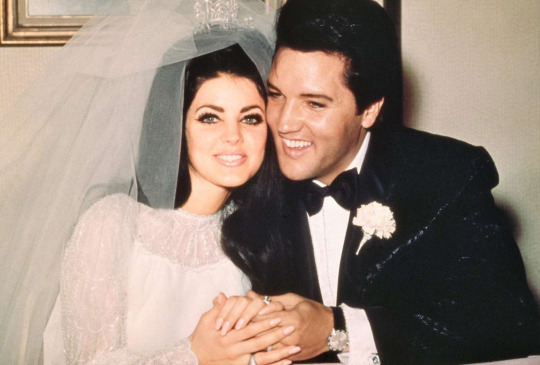
Elvis Presley (Purvashada Sun) met his wife Priscilla Presley when she was 14 and he was 24. He was hell-bent on "preserving her purity" and they had a very "chaste relationship" after she was married and had a baby however he did not want to have sex with her anymore because she was a mother.

In the 2002 movie Spider, Ralph Fiennes played a man who struggled with the Madonna-Whore complex. He has Mercury in Purvashada as his amatyakaraka.
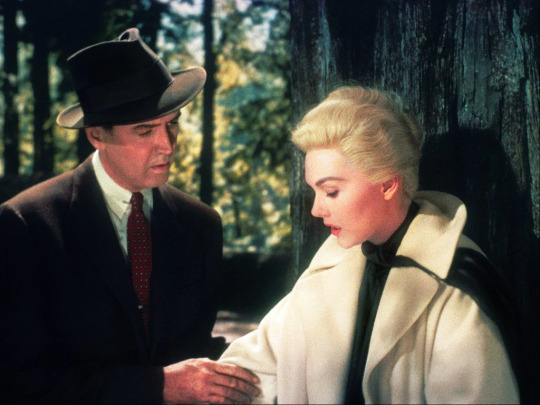
the movie Vertigo (1958) has this complex forming a major plotline. it stars James Stewart (Ketu in Purvashada) and Kim Novak (Mars in Purvaphalguni atmakaraka and Ketu in Purvaphalguni) as the lead actors.
The novel Portrait of the Artist As a Young Man features a protagonist who suffers from this complex and its the primary plot of the novel as well. Its written by James Joyce who is Purvashada Rising.
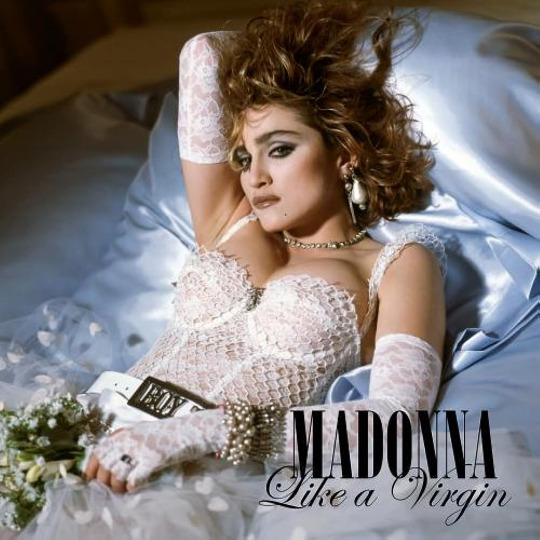
Madonna (Purvaphalguni Moon) often toyed around with the Madonna-Whore complex early on in her career and even has a song called Like A Virgin, the lyrics go like this:
"Like a virgin
Touched for the very first time
Like a virgin
When your heart beats next to mine
Gonna give you all my love, boy
My fear is fading fast
Been saving it all for you 'cause only love can last
You're so fine and you're mine
Make me strong, yeah you make me bold, oh, your love thawed out
Yeah, your love thawed out what was scared and cold."
Since Purvaphalguni is symbolised by the marital bed, and the consummation of the marriage was always associated with "losing innocence and virginity" and how sexual experience is linked with "knowing" and maturing from child to adult.

Black Swan, starring Natalie Portman (Purvaphalguni Moon) and Mila Kunis (Purvaphalguni Mercury & Venus) is a sexually charged movie that explores this dichotomy very well. Nina is a good little girl whereas Lily is highly sexual and wild.
A major theme of this movie is merging these two opposing forces. For good girl Nina to embrace her dark, wild "Black Swan" side. (spoiler alert!!) obviously in this movie, Lily's character is said to be an extension of Nina and not a real person which drives home this point even further.
Losing innocence and corruption/being corrupted are major themes in Purvaphalguni nakshatra and this is not just sexual. An ordinary person losing all sense of morality and submitting to utter debauchery and depravation is a common trope found in the works of many Purvaphalguni natives.

Take the movie, Taxi Driver, for example, it was written by Paul Schrader who has Bharani Moon, Purvaphalguni Venus & Mars
This movie revolves around Travis (the titular Taxi Driver) who is experiencing an extreme existential crisis and is deeply troubled by the prostitution he witnesses around the city; he is unsettled by the moral bankruptness and urban decay around him. He sets out to rescue a child prostitute and the movie has major elements of sex and violence.
This movie is a good example of Bharani's restrained Venusian expression meeting with Purvaphalguni's excess.
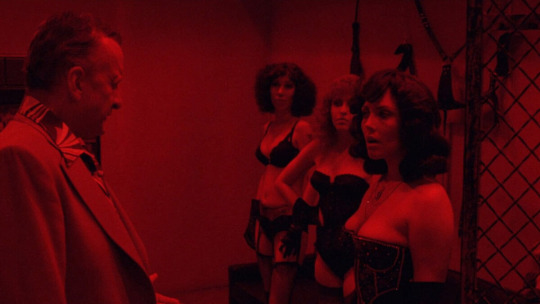
Hardcore (1979) directed by Paul Schrader (honestly all of the movies he's written and directed are LOADED with Venusian tropes, themes and motifs) is about a father who goes looking for his daughter who went on a church trip to Cali and ended up working as a porn star.
Like I've mentioned before, the dichotomy between innocence and corruption, divine and human, Madonna and Whore are core themes in the works of these natives. Like Taxi Driver, the protagonist has to descend into hell in order to save the person who is lost. The contrast between "polite society" or the prim & proper "morally upright" side of society versus the depraved, sleazy, immoral underworld is depicted in a very stark and raw manner.
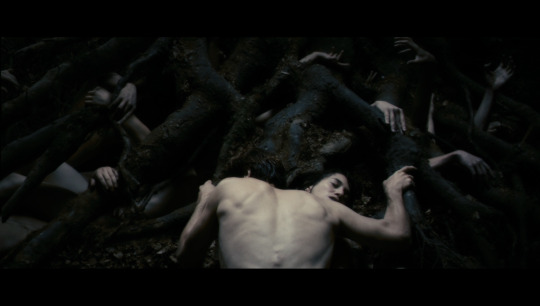
Antichrist (2009) directed by Lars Von Trier (Bharani Sun, Purvashada Moon) and starring Willem Dafoe (Purvaphalguni Moon, Purvashada Rising) is another movie that explores Venus at its most chaotic, unrefined and truthful. Its about a grieving couple who lost their son and go to a cabin in the woods to cope but of course, crazy shit starts happening and is rife with sadomasochistic elements.
Purvaphalguni is the height of Venus, located in the sign of Leo which is ruled by the Sun; here a native loses all sense of ego or pride and gives in completely to their pleasures and desires. Its a very hedonistic nakshatra. Given that its aim is Kama and is a Manushya gana nakshatra, it points to how a native is willing to do anything to attain what he desires; there is no sense of "right" or "wrong" here because Venus is a planet of indulgence.
In Bharani, presided by Lord Yama, the themes were strongly tied to karma, justice, time etc but this is the initiatory stage of Venus, where Venus acts with restraint. In Purvaphalguni, Venus is at its most expansive and wild. Bharani's yoni animal is an elephant; are elephants known for being very sexual? no. they are known for how they protect their herd and how nurturing they are of their young ones. Compare this to the rat (Purvphalguni's yoni animal). Rats have millions of kids and don't stick around to care for them particularly. Since they procreate at such a fast pace, it's every rat for himself. they are associated with filth and dirt.
Its very common for Purvaphalguni men to be involved in sadomasochistic sexual activities; in fact, two of the most famous writers to address these themes, Georges Bataille and Marquis de Sade both have Purvaphalguni Sun & Moon respectively.
“Life has always taken place in a tumult without apparent cohesion, but it only finds its grandeur and its reality in ecstasy and in ecstatic love.”― Georges Bataille (Purvaphalguni Sun)
"Lust is to the other passions what the nervous fluid is to life; it supports them all, lends strength to them all ambition, cruelty, avarice, revenge, are all founded on lust.”― Marquis de Sade(Purvaphalguni Moon with Ketu in Purvashada)
As such, many Purvaphalguni men have been involved in some type of sex scandal at least once in their career.
Nabokov who wrote Lolita had Purvaphalguni Moon and its a book about a old man who falls in love with a child. Like I said previously Purvaphalguni/Venusian men in general tend to have a virgin kink/a thing for innocence and corrupting someone and derive a sense of satisfaction from it.

in the 90s, Hugh Grant (Purvaphalguni Sun) was caught with a prostitute while he was in a long term relationship with Liz Hurley.

Freddie Mercury (Purvaphalguni Sun & Rising) was known for his wild and freaky love life, he openly spoke about his "enormous sex drive", he once celebrated his birthday with a 5 day orgy💀💀

Namjoon (Purvaphalguni Sun) received flak for recommending the book Almost Transparent Blue which featured graphic sexuality and violence including threesomes and rough sex. In his early career, he also received flak for his sexually suggestive songs like "Expensive Girl", "Trouble" and "Joke".
I don't want to go into this because I don't think there can be astrological evidence of someone being an abuser (i.e anyone could be any abuser regardless of their placements) but many Purvaphalguni men have had sexual harassment charges pressed against them.
“One must do violence to the object of one's desire; when it surrenders, the pleasure is greater.”― Marquis De Sade (Purvaphalguni Moon with Ketu in Purvashada)
This nak is the height of Venusian indulgence and as every peak is followed by a valley, Venus after ascending through the aims of Artha and Kama, now finds itself in the concluding Venus nakshatra of Purvashada. The aim of this nak is Moksha. When all else is satisfied, the only thing left to do is seek salvation.
Purvashada's yoni animal is a monkey and Purvashada belongs to the Brahmin caste. It is a Manushya gana nakshatra.
It is symbolised by “a fan/winnowing machine which separates grains from the husk”. It occupies the sign of Sagittarius and thus its sign lord is Jupiter.
The deity of Purvashada is 'Apah', Goddess of Water/Ocean.
In the final Venus nakshatra, the themes of refinement and purification are at their height. There is a relentless desire for expansion and the combined energies of Jupiter & Venus together can make a native simultaneously expansive but still constricted at the same time. Purification is a major theme in this nak. Bharani was concerned with birth and creation, Purvaphalguni with the sexual act in itself but in Purvashada, the Venusian focus shifts beyond either of the two.
Although Magha is most commonly associated with the "Goth" aesthetic, I would say even Purvashada natives have a tendency to lean towards a darker, macabre aesthetic.

Ozzy Osbourne (Purvashada Moon) was lead vocalist of the heavy metal band Black Sabbath and called himself "Prince of Darkness".
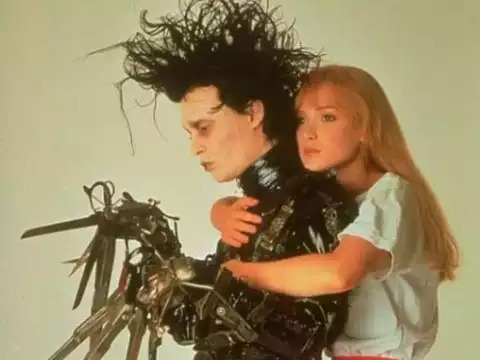
Johnny Depp (Purvashada Moon) stars as Edward Scissorhands in the movie of the same name. The movie revolves around an artificial humanoid creature who tries and fails to adjust to normal society despite the efforts of those around him. He falls in love with a woman he cannot be with. This is a common trope in the works of many Purvashada natives.
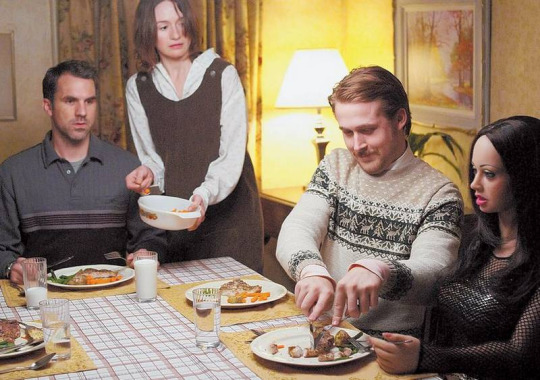
Lars & the Real Girl (2007) stars Ryan Gosling (Purvashada Moon) as a socially awkward man who begins to have a relationship with a lifelike doll believing her to be real. His family tries really hard to help him and ultimately (in a very Purvashada esque ending; because of Purvashada's connection to water) he believes that the doll is dying and mourns for her while submerged in water.

Charles Addams who created The Addams Family had Purvashada Sun (he was also Magha Moon), Morticia Addams was played by Carolyn Jones who was Bharani Sun & Moon, in the 90s adaptations she was played by Anjelica Huston who had Purvaphalguni Moon & Ketu

in the movie City of Angels starring Nicholas Cage (Purvashada Sun) the theme of a human and non-human being uniting is once again repeated, this time, Cage plays an angel who falls in love with a mortal woman. (spoiler alert!!) the movie ends with Cage choosing to be a mortal but his human lover passing away tragically. In true blue Purvashada fashion, the movie ends with Cage near the ocean, accepting his grief and new life as a mortal being.

in Francois Truffaut (Purvashada Rising) Jules et Jim, we see the tale of two men who both love the same woman, Catherine. The story repeats the same trope of how neither man gets to truly be with her (true union being impossible is a common Purvashada trope) and the movie ends with her driving Jim and herself into a river while Jules watches on. (death in the water or mourning someone in the water etc seems to be a common motif in the works of these natives)
“Love (understood as the desire of good for another) is in fact so unnatural a phenomenon that it can scarcely repeat itself; the soul being unable to become virgin again and not having energy enough to cast itself out again into the ocean of another soul.”― James Joyce (Purvashada Rising)
“The best people possess a feeling for beauty, the courage to take risks, the discipline to tell the truth, the capacity for sacrifice. Ironically, their virtues make them vulnerable; they are often wounded, sometimes destroyed.”― Ernest Hemingway (Purvashada Moon, Purvaphalguni Rising)
Hemingway's most famous work is titled The Old Man & the Sea and its set almost entirely on the water/the beach.

Christina Ricci who is best known for playing several dark edgy characters is a Purvashada Moon (she's also Magha rising)
I've also noticed that certain Purvashada natives have associations with Satanism 💀💀 or star in films that feature violent, gorey rituals etc

Rosemary's Baby stars Mia Farrow (Purvashada Moon) and Satanism is a major part of the movie's plot 💀

Zeena Schrek (Purvashada Moon) is the daughter of the founder of the Church of Satan and was the first baby to undergo a Satanic baptism. She's probably best known for conspiracy theories stating Taylor Swift is her clone lmao 💀😭

While Jennifer's Body's main story can be considered an Ashlesha themed one, there are significant allusions to the occult, virgin sacrifice and demonic possession which makes me believe it can be attributed to Megan Fox's Purvashada Rising

in the movie Satanic Panic (2019), Rebecca Romijin (Purvashada Rising) stars as the leader of a satanic cult.

Jane Levy (Purvashada Sun) starred as the protagonist in the 2013 film Evil Dead that features a lot of demons and demonic possession.

Nina Dobrev (Purvashada Sun) is best known for playing Elena on the show The Vampire Diaries. while i know demons and vampires are not the same, you've got to admit they share a lot of similarities xD
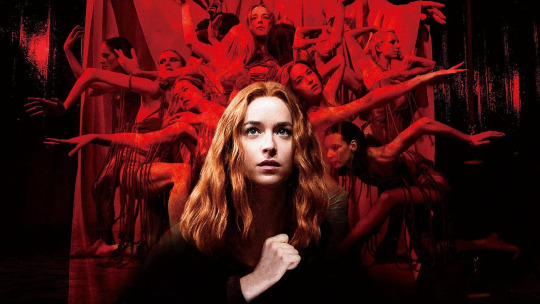
Dakota Johnson (Purvashada Rising) stars in Suspiria which is about a young woman who accidentally finds herself in a cult/witches' coven.
Some very well known people who could be called evil personified are also Purvashada natives, such as Hitler and Harvey Weinstein (Purvashada Moon)
Purvashada natives love to play the devil's advocate, the quality we most associate with a monkey (this nak's Yoni animal) is its playfulness. Purvashada natives do things simply for the heck of it/thrill of it. There is no sense of purpose or direction to which their Venusian qualities are directed. Thus it represents the dark side of Venus. When all other desires are fulfilled and the only thing left is to seek Moksha, the nakshatra tends to exhibit the Trickster archetype.

the 2002 movie May, stars Angela Bettis (Purvashada stellium; sun, mercury, jupiter and rahu) and depicts the cruel and sinister side of Venus very well (trigger warning; this movie is VERY gore-y), its about a woman who ritually murders several people who she did not feel loved by (to put it simply).
While Bharani being the initiatory Venus nak is Venus at its most ethical, all sense of "right and wrong" evaporates into thin air as the Venusian journey progresses. In Purvaphalguni, this manifests as a desire for sex itself but in Purvashada, the native is dissatisfied with mere bodily union, it seeks something bigger. This theme of union being impossible/not satisfying can be seen in the works of many Purvashada natives. The desire to delve into the occult arises out of a desire to transcend ordinariness, find something that addresses the darkness and uncover the truth within it.
The Venusian journey passes through the sign lords of Mars, Sun & Jupiter; beginning as a soldier, working out of a sense of duty, reaching its height in the individualistic Sun, seeking pleasure merely for one's own sake and finally concluding itself in the expansive Jupiter where things get unusual. Venus is a complicated planet full of contradictions and combining its energy with that of Jupiter which expands beyond control means the darkness of Venus makes itself seen in ways we don't quite see in the same way in the other naks.
The tattvas of these naks are earth, water and air respectively. It originates in a very grounded fashion, full of practical concerns, then dissolves itself entirely in the formless water before becoming the element that's hardest to narrow down; air.
Bharani with Aries, Purvaphalguni with Leo and Purvashada with Sagittarius and all these signs are traditionally perceived as masculine and the Fire element in general is understood as masculine. The opposite of fire is water, which is feminine (water being related to the Moon, which is a yin planet) whereas fire is related to the Sun which is a yang planet.
it is the combination of masculine with feminine that heightens the effect of the other. a highly masculine man or a highly feminine woman have integrated the opposite energy within them fully; they are internally almost androgynous . they dont lack the influence of the other
in Bharani, we have the womb and creation, in Purvaphalguni we have the bed, in Purvashada, we have the winnowing basket, separating the husk from the grain, depicting the different functions of Venus; as source, hedon, and order.
#sidereal astrology#astrology notes#vedic astro notes#vedic astrology#nakshatras#astrology#astrology observations#astroblr#astro notes#astro observations#venus#bharani#purvaphalguni#purvashada
332 notes
·
View notes
Note
Hey, thank you so much for answering my previous ask. I love reading your blog and what you have to say. Also I forgot to mention the person who thinks Sasuke fucked Karin also talked about what you said on your blog with someone else, https://dushman-e-jaan.tumblr.com/post/663748673413464064/i-saw-a-post-where-anyone-who-says-that-sasuke-and I'm pretty sure that's your post bc I read it. They're basically making fun of the whole thing and again slapping the "brothers" label onto practically everything you said 😭 What are your thoughts on this?
Hello.
Woah, yeah, that is my post. I wrote it a long time ago, I had no clue that they got this triggered by it, that they went through it line by line, as a response to me, replying to every statement I made in second person and didn’t even tag me. If it weren’t for your ask, I would never have found out about it. Well, I am going to take it as a compliment, whether they like it or not. Lol.
I don’t generally write my content to defend my takes, I give all the reasoning and cite evidence within my posts, and if someone has a problem with it, I generally reply to them in the comment box. But since this aforementioned post seems like it has gone some way into the anti SNS fandom, and because I wasn’t even aware of it, I will address some of these issues.
Okay. Gear up, this is going to be long.
First things first. They are offended because they don’t agree with my statement :
“Well, at least you are being consistent. Because people who think Sasuke and Naruto are brothers are the same people who think Sakura and Hinata are feminist role models.”
And they want to make it clear that there are other fans who don’t think highly of Sakura and Hinata, but still consider Sasuke and Naruto brothers. Well, I will give them that. I am aware there are additional fans who consider them brothers, CASE IN POINT. My bad.
Honestly, there’s a lot of stuff here, that just doesn’t require my response. Like my mention of Tarkovsky. It was used as a figure of speech by which I wanted to say that decoding Sasuke and Naruto’s romance wasn’t rocket science, it’s a straight statement, I don’t know why they gotta twist it. I think the mention of Tarkovsky threw them off, because they feel that only they have the authority to talk about more brainy things. Lol. So I am going to sidestep all the fountains of their insecurities and come to the point.
Okay so, they insist that Sasuke and Naruto are spiritual brothers, mainly because their chakras are reincarnation of Indra and Ashura’s chakras who happen to be biological brothers. And they take great offence to my statement that people who think of them as brothers are heteronormative and homophobic. I will come to that part later, I will address the reincarnation part first.
I honestly thought we were past this non-sensical and juvenile non-argument of them being brothers for the aforementioned reason. These antis use such big words and cite academic papers and articles and then, flip right over to say something so counterintuitive and irrational, without even considering any alternative understanding, it hardly seems like an argument and more like intellectual masturbation. Which it is.
Okay. This is their argument to support their stance.
“However, this story includes chakra, Indra, Ashura and is very much tied to spirituality. Buddhism, Hinduism and Jainism deal with that. Kishimoto took his inspiration from there.Hindu scriptures exhort spiritual people to lead exemplary lives, control their sexual desires and abstain from sex, just as they are expected to control all desires and practice renunciation and detachment with their minds absorbed in the contemplation of God or the Self.”
And it doesn’t stop there, this rambling goes on and on and on…phew. I appreciate the amount of effort they have seemed to put in their arguments. Sadly, it's all as misguided as it can be, lol.
While I agree that one can see the myriad influences of various philosophical schools of thought and spiritual belief systems in Kishimoto’s work, NONE of it proves their brother argument. Why? Because it’s all out of context. I see this a lot, the pitfalls and trappings of sticking to one’s projection in one’s favourite piece of art/literature and bending text and context to their will, with citations, whether it’s relevant or not.
Such mental gymnastics, lol. I have seen this kind of response by student film theorists when they analyse Ozu's films. Oh why did he put that vase in the centre of the frame, what did he want to say by showing that vase? Did he mean to depict loneliness or does it indicate the effects of capitalism and consumerism in an insular, collectivist, traditional Japanese society of the times, or is it about the soul that is trapped in the material prison of flesh etc etc etc. Over analyzation. Which they apparently have accused me of, hahaha.
Unfortunately, that’s not how storytelling works. And it definitely doesn’t work in Naruto’s case. They would do well to remember that writers are not out to con you. Any writer worth his salt uses a combination of narrative tools to tell his story. Sad thing is most fans in this fandom just don’t understand how stories are written, the specific tools that a writer uses and the narrative devices that guide and lend a certain flow and approach to the story. Kishi is just like any other writer, in that context. So when he wants to give a certain narrative or visual information to the audience, he will use these common tools to drive his point home. For example, foreshadowing. What is foreshadowing?
Sourced from Wikipedia :
“Foreshadowing is a literary device in which a writer gives an advance hint of what is to come later in the story. Foreshadowing often appears at the beginning of a story, or a chapter, and it helps the reader develop expectations about the upcoming events. A writer may implement foreshadowing in many different ways.”
And do we see this foreshadowing in Kishi’s plot? You bet, :).
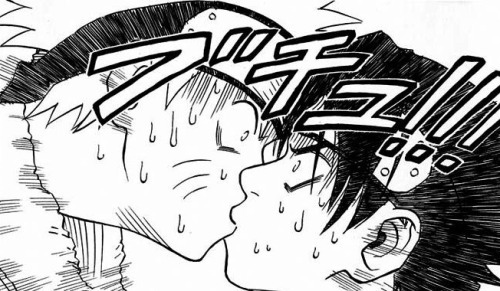
And this is Chapter 3. Lol.
If Kishi wanted to depict Naruto and Sasuke as brothers, he would not have made them kiss. Even if accidentally. This scene, right at the start of the manga, indicates the very romantic nature of their relationship. I wonder why these stans don’t find it suspicious that even though this kiss is supposed to be accidental, both Naruto and Sasuke think of this kiss as a precious memory, not as a joke, but something significant, something that contributed to develop their dynamic in the manga. I have seen hundreds and hundreds of films in my life, but I have never seen anywhere where two likely brothers were made to kiss like this, for the sake of developing their dynamic. Only in romantic relationships.
Let me state it out in as clear words as possible. - In a macro sense, the overarching narrative of this manga includes a clear intention by the author to push the characters of Naruto and Sasuke to give an appropriate name to their relationship, continuously harping on defining and redefining their relationship with plot points strategically appointed to affect their dynamic that further propels the central narrative of the story.
Simply put, Kishi forcefully insists on weaving this story in a way that forces the protagonist to think and rethink the meaning of what he feels for Sasuke, as instigated by Sasuke himself, who every time they meet, insists Naruto answer his question as to why Narutio is so hell bent upon following him, why does he care so much so that he is ready to leave his training and the people he loves behind, just to bring Sasuke back. And everytime Naruto even breathes the word ‘friends’ or ‘brothers’, Sasuke’s either annoyed or surprised or displeased, never satisfied, never convinced. The satisfaction comes at the end of the manga, in chapter 698, when Naruto finally gives some explanation as to what he means by it. Shippuden didn’t end with the war arc, it ended with Sasuke and Naruto’s reconciliation. It didn’t end on the note of an ideological conflict and its eventual resolution, it ended on the note where Sasuke asked Naruto : But what does being friends mean to you?
And Naruto said with a clear sense that he understands what Sasuke is asking of him and so after thinking for a very pregnant pause, says : Even if you were to ask me that, I don’t think I would have an answer. But when I see you carrying your burden, it hurts me, so much so that I just can’t take it.
You really don’t need a PhD to see the nuanced significance of this text.
Point is, this going back and forth trying to define their relationship is not an isolated incident, it basically makes the backbone of the story. Which is why the aforementioned dialogues make sense, as they form the conclusion of this story. If they were brothers, why would this element exist?
Everything in the story serves to contribute to the central narrative and for the sake of character development of its main players.
That Kishi saw a need to even discuss why they were not friends, and that they were not brothers, but that Naruto feels immense hurt at seeing Sasuke hurt, is indicative enough that Kishi was definitely not trying to portray them as brothers. That these stans consider them brothers, when this art made by Kishimoto himself exists, is proof enough that they are highly indulgent of their self projections.
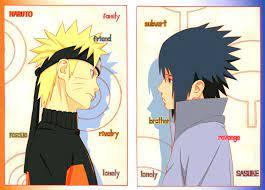


They are so motivated, for their own projections, to ignore the nuanced characterization of Naruto’s closeted gay self, or Sasuke’s oft pointed disinterest in women, that their understanding comes off as extremely lacking.
Ask yourself, why would Kishi even write these nuances in the way of visual imagery and strategic scenes where Naruto is made to react so strongly to even mild and unintentioned homoerotic moments? Why would Naruto be written to overcompensate to cover these moments up with something distinctly heterosexual? Why would Kishi even put so much effort in writing these characters this way if Kishi only wanted to portray them as brothers? What would even be the point of it?
Every single chapter goes through multilayered scrutiny by editors after it’s written, which means anything that is unnecessary or extraneous to the narrative is taken out. It’s supposed to be concise, and yet have the desired effect on the readers. Why keep those texts or panels that don’t serve the story? Instead, why do these elements serve to develop the characters? They obviously mean something, don't they? They are there for a reason, and anyone who has seen the portrayal of homosexuality in media will instantly recognise it. Those who haven’t can at least wonder why and venture to find out instead of giving their relationship names that are incongruent with their actual dynamic.
No other brotherly dynamic in the manga itself is even close to Naruto and Sasuke’s. Honestly, I have seen so much Japanese media outside of manga and anime in the last year, and I didn't see two men or boys depicted as brothers who make kissy faces at each other, or stand side by side looking like they are giving each other hand jobs and orgasming, or where one man’s mouth is deliberately drawn over another man’s crotch. To say that this indicates they were depicted as brothers, is not only counterintuitive, but downright ridiculous and plain stupid. It’s some real heavy duty denial.
If Kishimoto meant for them to be brothers because their chakras were reincarnation of Ashura and Indra, he would have made some character say it out loud in some context. Like I said, writers are not out there to con you. They will make sure that their intent is clearly shown to the audience, through text, subtext and visual language. And everything about Naruto and Sasuke, everything that contributes to their dynamic, whether it be dialogues, orchestrated situations, plot points, visual imagery, some of which exudes sexual tension, in no way indicates a platonic relationship. Those who have the presence of mind to pick it, will pick it, those who don’t would spout non-sense like our antis here. Lol.
Kishimoto knows how to use foreshadowing. Case in point.
He gives us an advance hint of what’s to come, and the narrative takes its twists and turns, being developed with this thread in mind, and then the arc ends with a conclusion of the underlying idea foreshadowed earlier with the hint. NONE of this is accidental. It’s all part of writing, it’s a literary tool, a narrative device. Hell, it isn’t a coincidence that Kishimoto keeps repeating this element over and over and over again, where Naruto goes through a whole range of situations and emotional upheavals in order to understand his feelings for Sasuke. First, he wonders if Sasuke is like a brother, or a friend, or more. Kishi can’t say it explicitly, but honestly, he doesn’t need to. These antis look for all sorts of reasoning and proof OUTSIDE the manga. If they were a little more honest with themselves, they would see that one really doesn’t need to do that, all the pertinent information that one needs to decode the nature of their relationship is inside the manga, in panels, visual imagery, dialogues, narrative development and notes.
Like I always say : First rule of deduction : Work with what you have. Facts, use what’s is available to you in the source material.
It is absolutely valid to look for outside source if you see a solid and legitimate reason to, which is congruent with the source material, like in the case of Chikamatsu. It’s already established clearly that Kishimoto is his fan, he has put a lot of effort to pay tribute to him in his own manga, he makes sure that this element is clearly present in the context and text, and the editors have talked about it in the notes. And ALL of that makes it a legit link, for one to connect it with Shinjuu.
The antis talk of irrelevant sources such as Jainism and Hinduism and whatnot, lol, it honestly looks like a super desperate attempt to twist and deform and bend the narrative to their interpretation where they conveniently ignore all the relevant panels where Naruto clearly says that him and Sasuke aren’t really brothers to Hagoromo, where Sasuke makes it a point to say to Sai that he only has one brother, clearly implying that he doesn’t consider Naruto a brother. All these extra interpretations that antis force upon the narrative is a result of their own projection. It's as simple as that.
If Sasuke was satisfied with the explanation that they were brothers, why would he keep asking Naruto the same question again and again? Doesn’t that indicate that he isn’t satisfied with Naruto’s understanding of it? And he is only convinced of it at the very end, when Naruto is bleeding out, about to die, when he finally, with much visible reticence, admits that he doesn’t know how to explain it?
Think about it, if they were just brothers, why would there be this hesitation? Being brothers is not a controversial thing, it’s not a taboo thing, it’s not abnormal, opposite in fact, given how much the characters of this story are shaped by their familial bonds. Instead of thinking of the most obvious things, these antis round up obscure and entirely irrelevant articles to sound smart and intellectual, as if that’s gonna make a difference. How is this extraneous intellectual regurgitation gonna help your case if your basic premise is wrong? That’s not how dialectics work. Lol.
Then they said this.: “(Considering Ino to be a closeted queer who only went for Sasuke to gain Sakura’s affections would be another one of these hilarious mishaps.)”
I honestly don’t know who they are referring to, because I have never said or implied anything even close to it. Maybe they are just assuming things. It’s not the only time they assume things. They also think I am some Western Man with my capitalistic and consumerist takes on Naruto. hahahaha.
Damn, I can't help but notice that whenever someone disagrees with them, they instantly label them as Western. Well, they are wrong on both counts, because neither am I western, nor a man. In fact, my socio-cultural understanding of the world is pretty close to Japan’s. I would also like to mention that my community practises the same religion that happens to be the official religion of Japan. But of course, I have never needed to flex on that, because it’s just not needed. The information that I got from the manga itself, plus my own experience of media is enough for me to make my points. I am able to qualify my content with the evidence found INSIDE the manga, and if I see clearly delineated references to outside material in it, I point them out. Like I have done here.
Honestly, it’s as simple as that. No need to twist your head at a 180 degrees to prove your point, if you are trying that hard, it becomes clear you have no legit leg to stand on and you are making shit up, just to validate your headcanon.
Don’t act against intuition, don’t act against text and visual language, don’t act against what is both explicitly and implicitly given in the manga because that is the opposite of examining something objectively. But well, people do worse to keep sticking to their denial.
Anyway, this foreshadowing can be seen in the first arc, where the central theme is ‘protecting one’s precious person’ and how one can unlock special hidden strengths when one is motivated to protect the person most dear to them. This element is foreshadowed in the relationship between Zabuza and Haku and through twists and turns, is finally concluded at the end of the arc, where Sasuke almost dies to protect Naruto and both unlock special powers for each other. Not rocket science. Kishi is a generous author that way, he wants this reader to know what he is saying and what he means by it, and so he will supply enough textual and visual information to make sense of the overarching story and themes. To simply ignore that for one’s head canons is a gross injustice to the story and the artist. If you have to ignore what he is saying explicitly or drawing explicitly, why even bother to engage with this manga? lol. What a waste.
It is not a complicated thing at all, in fact, it would have become a lot easier for Kishimoto to write this story if he could just have explicitly written them as brothers, a lot of effort would have been spared, no? And it would have all been believable, because it makes total sense that Naruto would want to save and protect his brother. The story would not change at all. Then why the hammer like insistence on having this whole brother or friend or comrade dialectic? Why? You know why?
Because they are NOT brothers.
Next, they said this : The problem with a lot of western readers is that they discard any and all relationships, familial and platonic, in favor of their romantic obsessions and delusions of “freedom” in a capitalistic society,................... ... the widespread consumption of amorous rituals constitutes the core of contemporary romantic love, reinvigorating capitalism and lovers alike.”
And this goes on and on….I am not going to put the entire thing here, it’s basically unnecessary blathering and intellectual masturbation.
Snickers, Delusions of freedom in a capitalistic society. Bwahaha. Where is this even coming from? Entirely irrelevant. Reminds me of my younger self when I would deliberately attach esoteric sounding citations to my papers to impress the professor and would still get a B. Lol.
I have written enough on the subject of the importance of familial bonds which shape the characters in this manga, so they are definitely wrong on that count. But well, they think they are the authority on Japanese media, what can I say? Sidestepping what’s actually in the manga and supplementing your argument with entirely disproportionate and irrelevant pointers only indicates that they are floundering. When you have no legit foundation for your argument, this happens. Lmao. I am no stranger to it, thankfully I got over it in my teens.
Then they claimed this : (Remember, Kishimoto comes from a very small village and is from a different generation altogether; so the odds of him penning anything even close to the “sexual categorizations” of the post-modern western sexual-domains are less than the second coming of Christ.)
Hahahahahaaha, I know you can’t tell, but I am literally wheezing here.
These stans literally talk like Kishimoto is a hundred year old man. Like…the lack of reason and logic in this statement is so apparent, I am surprised that they thought it would be worthwhile to make this comment. Lol. Sexual categorizations of the post-modern western sexual-domains??? What crap!!! Hahahah. Just say you are a straight homophobic woman who wants Sasuke’s dick and go!
So what if Kishi comes from a small village and a different generation? Does that mean he doesn’t know what homosexuality means? He doesn’t know sexual categorizations of the post-modern western sexual domains? What a bunch of hooey, lol. These stans talk of homosexuality like it’s some kind of western propaganda. Go ahead, tell me it’s not homophobic, heh. PoSt mODerN WEsteRn SexUal DomaiNs. Lololol.
Truth is, pre Meiji era, Japan was perhaps the most progressive of all cultures when it came to sexual categorizations. Here, this post is educational. Funny how these stans call SNS western and then do the same thing that most western fans do, who know absolutely nothing about history of sexuality in Japan. Here, they should maybe learn about it before sounding this ignorant, the video is pretty self-explanatory.
Edo period Japanese culture accepted homosexuality as the purest form of love that could exist between two samurais. Young men were allowed and even encouraged to have young male lovers, and after a certain age, they were expected to get married to women. A lot of men chose not to. And even though it was frowned upon, it wasn't a punishable offence.
Hell, one doesn’t even have to go there, check out Edo and Meiji period art, you will find lots of peculiar, very creative art with homosexuality as its subject. I would put those pictures here, but it would make this post x-rated, lol. The sexual imagery is off the charts, like Japan’s imagination is mind-boggling, like woah. They might be a small country but the scope of their imagination is huge. With the advent of Meiji era, that changed, as homosexuality became illegal, but this art was still produced underground.
Hell, a lot of the most celebrated artists in Modern Japan have created art about homosexuality. Film makers such as Nagisa Oshima, Takashi Miike (Shinjuku Triad’s Society, Big Bang Love, Juvenile A), Toshio Matsumoto (A funeral Parade of Roses), Akira Ogata (Boy’s Choir, a film about two orphaned boys who study at the same institution, and eventually fall in love with each other), have made excellent cinema on the subject matter. And these aren’t your run of the mill commercial yaoi creators, these are serious film makers whose films have done their rounds in national and international film festivals, earning awards and accolades from critics and audience alike.
The film, ‘Funeral Parade of Roses’ is a story about a young, gay, cross dressing boy who is in love with his father, a modern day adaptation of Oedipus Rex, only flipped. And this film was released in the 60’s. A product of the Japanese new wave cinema, it is considered to have influenced Stanley Kubrick’s ‘A Clockwork Orange’. It was considered quite a controversial film for its time in the west. It took over forty years for ‘Hereditary’ fame film maker Ari Aster to make a film on the subject, ‘The strange thing about the Johnsons’ in 2011, and the audience was shocked to their core with it. Japan was doing this shit in the 60’s. Lol. Oshima belonged to a small region in the southern Okayama prefecture called Tamano, founded in the 40’s. So? Kishi also belongs from the Okayama prefecture. What, people from small villages remain ignorant throughout their lives? They can't learn? They can’t be exposed to stuff?
Oshima was a pioneer of Japanese New Wave cinema, going forward to become one of the most celebrated film makers in the world, with a beautifully distinct voice. He made films on themes of homosexuality, and his stories were inspired by real life events in Japan. He made Gohatto, a Jidaigeki film (which basically translates to Japanese period drama, usually set in the Edo period) which is about Samurais lusting after a bishonen boy, training at the Shinsengumi, organization of Samurais. People of Japan are more than familiar with the tales of Shinsengumi, they grew up with it. He made ‘Merry Christmas, Mr Lawrence’, which also features homosexual themes, starring David Bowie btw.
Kishimoto wasn’t even born or was of legal age when some of these films were released. Japan was experimenting in the fields of cinema and various subject matters, including unsimulated sex in a legit film.
They think he wouldn’t be aware of these films, Kishimoto who happens to be a film buff himself? Honestly, how insular do these stans think the Japanese are?
These people talk like the Japanese are some dumb, ignorant group of people, who don’t know shit about what’s going on in the world. Honey, that’s you, not them. Kishi is a well read, well exposed, well rounded writer.
Like yes, Japan was quite insular at some point of time, but after the second world war, they were forced by the allied nations to open up their borders. And the influence of western elements and themes can be seen in their art. In fact, western influence had already taken roots since Meiji era. The men even had to cut their hair for it. Even kabuki wasn't left alone. And it's not like this is some well kept secret. Kishimoto’s manga is definitely very much Japanese, but it has a cross cultural appeal as well. I don’t think one is doing their due diligence when one simply ignores that factor.
Okay. Let’s talk of Kishimoto’s influences.

These are a few excerpts from Kishimoto’s interviews, the Western influence is pretty clear. Does this look like some dude who doesn’t know what he is talking about? Does this look like someone who is inert and insular and ignorant?

Look how inspired Kishimoto is by Akira and its mangaka, Katsuhiro Otomo.
For those who don’t know, Akira was the anime that opened up the western markets for Japanese animation and manga. The film was made for the express purpose for Japan to open the western markets for her products, show off their goods to the world, that this is what they can do, and as it turned out, it was better than anything western audiences had ever experienced in terms of animation and storytelling at that point of time.
Cartoons were earlier considered to be for kids, the common perception was that animated media was supposed to be infantile, catering to a certain target audience. Akira changed that perception. The legacy of Akira is humongous. It opened up doors for other animes and mangas such as Dragonball Z, Ghost in the shell, Naruto even. This was the time in late 80’s when Japan was experiencing an overall good economy for the first time in 20th century, their financial shares were soaring. This was the time when corporations had opened up in Japan, and anyone who was ready to become a salary man could take advantage of the financial benefits resulting in significant disposable incomes. So people had more to spend on entertainment, and so production companies were chasing talented mangakas left and right to adapt their work into anime. Japan was so committed to this great enterprise of Akira, they formed a committee to finance the very high budget that a commensurate and successful rendering of the manga’s adaptation would require. The committee consisted of Kodansha, Mainichi Broadcasting System, Bandai, Hakuhodo, Toho, LaserDisc Corporation and Sumitomo Corporation (if you can’t tell, these are big, huge corporations) who all forwarded money and promotion towards the film, and appointed the mangaka himself to direct the film, because who else would be able to tell this story better when so much was at stake?
Otomo worked his ass off, drawing hundreds of storyboards to condense the 120 chapter long manga into one film. And he did it, and what a film it is. Like wow, I was blown away. Akira, being a cyberpunk manga, also has that cross cultural appeal, even though its major themes are still very much Japanese, but if you look closely, this film tells a story the entire world can benefit from.
Kishimoto is inspired by American film makers such as Michael Bay, Quentin Tarantino. He talks of Takeshi Kitano, lovingly known in Japan as Beat Takeshi, a very popular figure in the west, who also was a regular in Oshima’s films, having played major roles in his gay films. These stans think Kishimoto, a cinephile himself, isn’t aware of these films? Bullshit. Lol. A lot of mangakas want their work to be recognized by the entire world, especially in the west. It speaks of their global success, why would they want to just keep to their native audience?
Truth is, otaku culture evolved in a very specific way. The second world war, especially after Hiroshima and Nagasaki were bombed, drastically affected the ethical and emotional landscape of the collective Japanese psyche. While the reverberations could be seen in their media, unfortunately, it wasn’t in the mainstream media where these effects were manifested, rather it was in alternative media, in the subcultural genres. You don’t have to take my word for it.

Takashi Murakami, a product of Otaku culture himself, talks about this, someone that Kishimoto himself has paid a significant tribute to in his manga (Deidara’s aesthetic is super flat, which is basically a socio-politico-cultural art movement pioneered by Murakami). And I saw for myself what he was talking about. Japan is a collectivist society, there isn’t much freedom for individual expression. Japanese emperor Hirohito, who is directly held to be responsible for the Japanese contribution to second Sino-Japanese war and the second world war by many historians, was considered to be a God by the Japanese, literally. Like Kim Jong Un style. No one questioned him. But after Japan’s role in the war as the predator and subsequently a victim, it broke the Japanese in a major way. Turned them humble, repentant. This collective grief and shock and widespread devastation brought the people together, they forgot their differences for the moment, to somehow pick up the pieces and go on living their lives, with gratitude for what they had. But yes, it’s not as explicit in their mainstream media as others. I mean the amount and variety of films based on the second world war that I have seen in European and American cinema, like damn. Japanese cinema on the other hand? Pretty tame in that regard.
Takahata made ‘Grave of the Fireflies’ on this subject, a heart rending and deeply disturbing story about two orphaned siblings living during the war, is considered as one of the most effective anti war films ever made in the history of cinema, as said by Roger Ebert, the man himself. Anyone who has seen the film will know it is an anti war film. But when Takahata was interviewed about it, he denied it. He said he didn’t make an anti war film, he wouldn’t even talk about it and later, stopped giving interviews about it altogether. Never underestimate the censorship of the Japanese administration. Oshima, a staunch modernist himself, a huge critic of Akira Kurosawa’s old world values and humanism, equally critical of the right wing and extreme left wing politics of Japan, made heavily political films, broke up with the studio system that launched his career, because of how left leaning, political and individualistic his voice was. His films were often banned or taken off screens, he was subjected to numerous court cases. But he persevered and even a stroke couldn’t stop him. But that’s Oshima. Oshimas are a rare breed.
So what couldn’t be seen in the mainstream media, you saw them in alternate or subaltern media. Akira is a direct testimonial to this. Akira is a story about a bunch of orphaned kids living in a dystopian world, that has been devastated by a bomb blast, past which Tokyo, now Neo Tokyo, is submerged in corruption and civil wars. The administration uses children as weapons to protect their own borders, but is eventually destroyed by these same children, when they couldn’t handle their powers. The reverberations of the post war atrocities can be viscerally felt in the themes of this manga, prompting a myriad of ethical implications and queries, questioning one’s understanding of a nation, of responsibility towards one’s people, love, hate, revenge borne of that hate, power, megalomania, philosophical implications of technology and the destruction borne of it, conflicts between different ideologies and so on and so forth but it’s resolve is quite familiar.
The resolve is about love, redemption, atonement and peace. That wars happen because there is love and hence there is hate, it's the people that make wars happen and it’s the people that pick up the pieces and go on living. That one can be hopeful even in adversities. No one is singularly condemned, no one is singularly held to blame even though it’s not difficult to see that things could have been handled better. But it’s not as black and white as that. It’s complex. World is complex.
But what we do see is that Tetsuo, an orphan who lives on the streets, who loses himself in the quest for power, fuelled by his need to be acknowledged, finally gives up on destroying everything when his lover Kaori dies protecting him, and at the urges of his best friend Kaneda, Tetsuo finally sees light, for the sake of his love for Kaori and Kaneda, and so he repents before dying. That all his passions come to nought when he loses the one thing he held dear to him, love for his friend and girlfriend, the only people that made him feel like he mattered.
Similar themes can be seen in another manga Kishi is influenced by. Ruruoni Kenshin, basically a romance manga in shounen, written by Nobuhiro Watsuki. Battosai, the political assassin, falls in love with Tomoe, a spy, basically two people from opposing ideologies. Tomoe sacrifices herself for Battosai, even after Battosai has discovered her true identity. The manga is structured with themes of ideological conflicts of love, revenge, love for one’s nation and adherence to one’s philosophy/belief systems, as it's set in the time period of transition between the Edo and Meiji era, but the resolution is similar. That love trumps all, that true love is greater than all the constructs made by humans.
Is there any wonder we see similar themes in Naruto? Kishi uses similar effects and themes for his world building in Naruto and Shippuden. A dystopian society where children are barbarically used as weapons, where gross injustices happen, but people go on living. This world imagined by Kishimoto is a reflection of the real world, richly dramatised with similar themes of love and conflicts and ideological differences and war and devastation and revenge and human ethos and peace and atonement. Similar resolve? I would say so.
And I won’t even dismiss that Sasuke’s character is definitely left leaning. Sasuke is partially based on Sasuke by Sanpei Shirato, a popularly known leftist voice in the manga industry. It’s pretty clear for anyone with half a brain to see that Sasuke is anti-establishment, and for good reasons too. The collectivist, utilitarian, highly corrupt system of the shinobi world leads to utter devastation and genocide of his entire clan overnight directly under the noses of the citizens and leaders of Konoha, and whose body parts are then commodified in the name of protection of the same nation that was built around the philosophy of ‘Will of Fire’, which was supposed to protect them but instead who slaughtered them in their sleep.
Sasuke’s interests and need for justice stands in sharp contrast with the ways of the shinobi world, and where no one could understand him, Naruto finally does. He is the only one who tries. He is the only one who is capable, who is made to be capable by the way of the narrative where Kishimoto develops his character accordingly. Naruto is naive and simple minded to start with, but he is written to learn and evolve and understand different points of view. To learn from people’s tragedies and losses and grief and motivations. He is exposed to the way of this world through anti hero archetypes such as Nagato and Obito and Zabuza, where after Naruto, through his own inherent moral and humanistic code, begins to understand a world that is founded on love turned hate, which further paves the way for revenge, but is determined to put a stop to it. By proving his love for Sasuke, and Sasuke accepts his love. Sure, had it not been for Sasuke, he would have let it continue or have simply died with Sasuke before he could witness a better world. But my point is, similar resolve : Love trumps all, peace, redemption and atonement.
This is not to say that I approve of the ending, I do not. I hate it. Firstly, if the theme of Naruto and Shippuden was already established and concluded as 'love trumps all else including the socio politico cultural structures and institutions made by humans ', then why the hell were they made to marry women when they are clearly gay? And secondly but equally importantly, Sasuke should have gotten his dues, he deserved it, so did Neji and Naruto. The truth of the Uchiha massacre should have been revealed, and Konoha should have taken accountability and repented, these are after all, some major themes in the manga. Kishi broke all sorts of storytelling rules at the end and I am mad as hell at him for that. But unfortunately, I didn’t write this story and couldn’t have had if I tried. Doesn’t mean I will look for things in it that aren’t there. Kishimoto is not a communist or a right winger. He is Japanese. Both extremist interpretations of manga are misguided. Tobirama was a bigot that plotted against the Uchihas, Hiruzen was a complacent failure of a leader who let things happen in his regime that by no means indicates good leadership, Uchiha clan was discriminated against. But Kishi could not have made Sasuke reach his goals, not if Naruto, the protagonist, was supposed to be of any consequence, which essentially makes Naruto hold a moderate position. I also don’t like the fact that the ending and consequently Boruto, diluted Sasuke’s belief systems and very justified goals, I wish they could have modified it to a conclusive ending where him and Naruto could have worked towards changing the status quo, but I don’t think it would have materialised, Shonen Jump is strict about these things, namely pedagogic values appropriate for a certain target group.
The conflicting ideologies definitely serve to make this manga drama and intrigue rich, but let’s not go overboard and look for things that aren’t there, which is what these stans seem to do. There’s no use in chasing shadows.
Then they said this : “He (Miura) actually does talk a little about the sexual tensions between Guts and Griffith! Must’ve been one of the parts I was having a hard time putting into decent English. Basically Miura says that he doesn’t really agree with how people read sexual tensions into the Guts-Griffith relation, because men can have passionate feelings about each other without it being like that……..Yet none of this is meant to be “romantic love”. There’s passion here, intensity, obsession, but it isn’t sexual. ”
Truth is whether it be western or Asian media, the concept of misinterpreting homosexuality as brotherhood is quite well explored in global media. Don’t believe me? Here. All facts, no frills.
One doesn’t even have to go very far, just look at Clamp, and you would be lucky if you were able to find more than five heterosexual characters in their entire range of mangas, lol. And honestly, their example of Berserk actually works in my favor and not theirs? GriffGuts is a valid gay ship. But of course, if they can reject SNS, it’s likely they would reject GriffGuts. Kishimoto and Miura, no matter what they say in their interviews, why is that more important than the story itself? Not like Kishimoto sounds all that confident in his interviews either, when he talks of them being more brothers than blood brothers.
I have not looked very deeply into Berserk, so I would like to invite veteran blogger @maoam to shed some light, one of the very few bloggers that I find with one of the most balanced and informed takes on Naruto and other relevant mangas.
Going ahead, let’s see what Miura says of boys.

Really Miura? Now what is this 'tingling' feeling?
What does this remind me of?

Lol. Now this isn’t the most accurate translation. This is the accurate translation, I am not sure of the source, I got this screengrab a long time ago, but I know for a fact it is legit.

Btw, the 'kyun' sound effect used here is used in Hentai to denote sexual arousal, lol.
Tell me what kind of brothers feel these feelings for each other? I have seen numerous Japanese films whether it be family dramas, Jidaigeki films, Japanese LGBTQ+ films, and I have never seen brothers behaving with each other like this once. Not once. What spiritual brothers? Lol. Why go against reason, intuition, narrative, visual imagery and cultural context to prove something using irrelevant sources?
Like I thought we were past this Brother argument, it’s the 21st century, there are more discussions on homosexuality, the subject of homosexuality has gained more exposure and a lot of talented and individualistic creators have explored this subject. So why is Naruto fandom this backward and narrow minded??
I find it hard to believe that despite Kishi’s subtle but not really, and repetitious ministrations on the issues surrounding a stigmatized subject such as homosexuality, is that invisible. All you need is an open minded approach, that is all. You do that and the manga will unfurl itself so you will be able to see things that you so conveniently ignored before to satisfy your headcanons. Is it that unfair of a request?
Do these fans think they know everything about everything? They couldn’t have missed something? Something as glaring and apparent as SNS? Before they claim that they are some omniscient, all-knowing being, maybe watch some LGBTQ+ media, and compare notes? Analyse tropes? Give themselves some credit, that they have done their due diligence before spouting things they obviously do not understand? Or is that too much to ask for?
Maybe they have learnt everything in the world that is to be learnt and there’s just no free space in that highly evolved noggin of theirs.
Maybe we are all just stupid fans who don’t know what we are talking of, even if we give the most objectively valid reasoning and evidence found inside the manga. Maybe they know best, maybe that’s why they think Sasuke slept with Karin, even when he shows no interest in her apart from maybe once or twice protecting her as his teammate, something he also does with ALL his other teammates? And generally, gets really annoyed and uncomfortable with Karin’s over the top sexual proposals, and then doesn’t think twice about getting rid of her when she is used as a bait to have him captured. Hmmm, I see their logic. They must really be the all knowing omniscient being, the Arahat, the wise one, the one who finally achieved Nirvana, proper enlightenment and all huh? Damn I feel so small. (A tear rolls down my downy cheek as my bosom trembles in humiliation). LOL.
Interestingly, the way Miura talks of boys, that they give them a ‘tingling’ feeling, makes me think. Keep in mind, Miura never married, there is no evidence of him having had a girlfriend. But let’s not speculate, even if it sounds fishy.
Understanding homosexuality in a conservative society is crucial in order to understand the SNS dynamic. There’s no doubt that Kishi wrote Naruto as a closeted homosexual and Sasuke as a homosexual boy. If one denies this, I can’t even take them seriously.
But it reminds me of an anecdote my gay friend told me. He is a national award winning filmmaker, an intellectual in his own right, and works a lot with the trans community in my country. A conservative, ultra religious, non-western country. As a young man in his twenties, when he had just come out, he would date men who would simply not identify as gay. He would sleep with them, and do what do people sexually attracted to each other do. But sleeping willingly with a man and accepting the gay identity are two different things. Where my friend understood these nuances even then, as having come from a conservative society himself, he would not force them to come out. These men would never even acknowledge that being attracted to men and not women makes them gay, it was not even a part of their understanding. Rather, they would think of it as something that ‘certain’ men do. Doesn’t mean it’s weird or uncommon, even though they knew straight men did not do this. But they would simply not go there. They would just chalk it up to something temporary, something that they needed to do before they got married to women they didn’t feel anything for, because that’s how it’s done. It’s not like they weren’t aware of the gay dialectic, my friend would talk to them about it, but they would simply not acquiesce, the denial was so strong. Till date, these men don’t admit to it, now they are married and have children. But still look for sexual relationships with men outside of it.
Which brings me to my next anecdote, told to me by another friend of mine. He is a stylist, absolutely flamboyant and openly, proudly gay. Very adventurous and experiment loving. He told me that in his experience, the best carnal fun he had was with Muslim men. And that most men who approached him for sex were Muslim men. (This is not an attack or criticism of the religion or community, it’s just something my friend told me). He would be approached by these men who would have the most voracious of appetites and tastes, and my friend went with it because he preferred to suck circumcised dicks, lol. Quite a lot of them were married, but my friend didn’t discriminate. He told me the same thing, these men would never identify as gay, not even during intimate moments, nope. Accepting your sexual identity is a more than a matter of sex. People in conservative societies face a lot of challenges and obstructions before even coming to certain realizations about themselves, it’s not that easy. In many ways, my country is even more conservative than Japan. Homosexuality is quite a taboo, hell, I didn’t even know the concept myself till I was well into my teens, and even then, I was only told the most stereotypical of things. I also grew up in a small town. It was later, when I went to the city to study, when I came into contact with people from all walks of life, nationalities, tastes, and sexual orientations, that was when I understood them as people, and not categories and labels. And now I have a friend who works as a dominatrix for a living and I still learn a lot.
I refuse to judge people on the most basic and stereotypical of preconceived notions.
The reason why I consider these fans to be homophobic…. Honestly, what gives them so much confidence to consider Sasuke and Naruto as brothers despite everything that is in the manga? Everything, from characterisation to plotting to the overarching themes to visual imagery to cultural context to text indicates their very romantic relationship, not platonic. Naruto admires the way Sasuke looks physically more than once and effectively calls him hot in Gaiden, what kind of guy thinks of his brother in those terms?
These stans are so pressed to label them brothers without even looking at gay media, or gay narratives, without even paying attention to nuances in the manga, or Japanese historical context or their own gay media, appropriating everything for the sake of their projection, dismissing or ignoring loads and loads of text and panels and characterisation, why? Why can’t they at least entertain the idea for once and reread the manga with that approach? You can’t be so sure of your projection, c’mon, you know it’s counterintuitive, it just simply doesn’t gel with what’s in the manga. So why this extended stubborn denial? Give me proof that reincarnated chakras make two people brothers. Where does it say in the manga? Show me. I can show you everything that I claim, it’s all inside the manga. Where’s yours? So just because it satisfies your ego, it’s a valid take? Why are you this sure of your takes? Given you have gotten multiple things wrong? Like objectively wrong.
Look, I understand denial is a strong factor, when we don’t want to see things we don’t like, our minds act like blinders. It would restrict your vision and make you see only what you want to see. And what a sad way that is to live, what a waste of time. I don’t believe in living that way, not in my media and not in my real life. But this obstinate refusal to accept SNS as romantic, is nothing but one’s desire to not accept Naruto or Sasuke as homosexual because you think it’s icky? Undesirable? Unattractive? Different from shounen norms? And because you want them to be straight so you can self insert? Whatever the reason, as long as you ignore real evidence and real proof, I will see you not only as heteronormative but also homophobic, you don’t gotta be overt, your underlying beliefs reek of prejudice and bias, especially when you haven’t done your due diligence, something that you mandatorily should have done in order to analyse this story. Doesn’t take a PhD degree to see that.
Like Denis Diderot said - We swallow greedily any lie that flatters us. But we sip only little by little at a truth we find bitter.
My advice to them? Give yourself a break. Give yourself enough credit that you are open minded enough to entertain an alternative understanding, even if just for the moment if nothing else, and see where that takes you. Watch more media, watch gay media, talk to people, listen to their stories, try and understand their point of views, read more, compare notes, learn more. And ask if you don’t know. There’s no shame in admitting you might not know something. Because you obviously don’t.
I am always of the mind of learning more and more, and I know I have strong opinions, but give me reason and logic and evidence, and you can bet I will listen, and even acquiesce to you, if I find it satisfactory. Because that’s how things should be, if we can’t grow and learn from what life teaches us, what’s the point? We all have a lot to learn, don’t we?
Anyway, there’s some more shit that they claim which is essentially written in a similar vein, more or less, albeit in the same condescending tone. Lol.
But I am done for the day, I am tired. So imma stop, this is me.
362 notes
·
View notes
Text
THE SATURN THEORY
PART TWO
This is my theory that SATURN is very very important to Taylor Swift’s rerecording process, the dates she is releasing them and the reasonings behind it! I believe she is using Saturn to fuel the Karma cycle, which created the 112 day cycle for the rerecords dropping, and she has left us lots of easter eggs along the way (for years!) please check out part 1 if you’re interested!
“Love you to the Moon and to Saturn”
The first mention we get from Taylor of Saturn is in the song ‘seven’ from folklore.

Love you to the moon and to Saturn is the 13th line of the song. Taylor’s special number - I think this shows Saturn is important.
Line two of the song is where we get the first mention of seven. Eleven lines later we get our mention of Saturn. Two Eleven, 211, reversed is 112!
Seven obviously represents the number 7. Saturn is the sixth planet in the solar system so represents 6. Together these represent 7/6, the supposed date of the final rerecording being released on the 7th of June.
776
From the song “seven” we can take the numbers 776. the song being the seventh song, then the name being “seven” and saturn being the sixth planet.
Where does this link to? Taylor’s red era t-shirts. These highlighted letters can be unscrambled to say ONE TWELVE REAVER, which numerically add up to 776. Could this be an accident? Yes. Do I think it’s accidental with Taylor? No. It’s Taylor. Nothing is EVER accidental. This is my tiktok explaining the ONE TWELVE REAVER as I understand it’s confusing!
The Orange Door
One of the colours that represents Saturn is orange. This is the colour we associate with the “Karma Album” and with Karma in general. It’s a very important colour in Hinduism which is where the Karma cycle comes from.
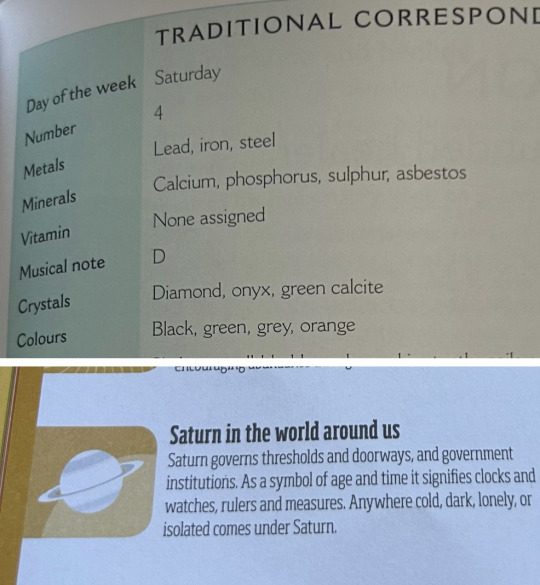
Saturn is in charge of thresholds and DOORWAYS.
Where do we see imagery of an Orange Door? In both the Lover House & the door which Taylor leaves through at the end of the Eras Tour after Karma.

Taylor leaving through the orange doorway to me represents Taylor leaving the Karma Cycle via the symbols of Saturn.
The Saturn Glyph
The glyph for saturn is this:
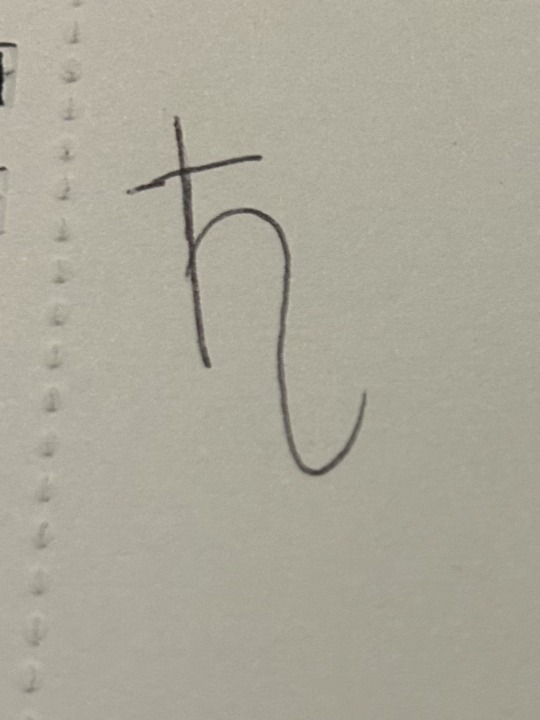
looks like a t and a backwards S right???
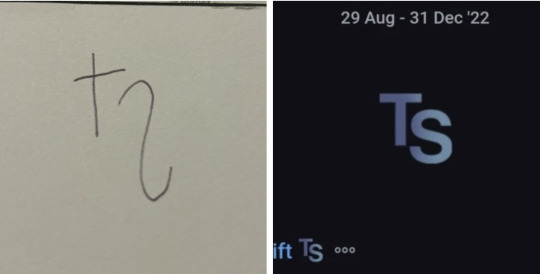
it weirdly similar to the hashflag used on Twitter for Midnights. I just couldn’t quite get past it!
and thats part two over with! I have more posts to come, lots of actual clear decoding of music videos, outfits, lyrics and the Eras Tour! 🫶🏼🪐 remember none of it was accidental…
#the saturn theory#this is part two#taylor swift#swiftie#taylorswift#taylor#ts#taylor swift eras#the eras tour#eras tour#taylornation
15 notes
·
View notes
Text
Decoding the Divine: An In-depth Exploration of the Saraswati Aarti

The Saraswati Aarti, sung in honor of the revered Hindu goddess of knowledge and learning, Saraswati, is more than a simple devotional hymn. It is a multi-layered, lyrically meaningful, and melodically potent piece of spiritual poetry that serves as a backdrop to deeply rooted cultural traditions and emblematic rituals. This article aims to delve into the layers of the Saraswati Aarti, illuminating the divine it encapsulates and nurturing a deeper understanding of its significance.
The Importance of Saraswati in Hinduism
To understand the depth of the Saraswati Aarti, one must first comprehend the prominence of Goddess Saraswati in Hinduism. Recognized as the epitome of wisdom, art, and learning, she is often depicted with four hands, each symbolizing aspects of the human personality in learning: mind, intellect, alertness, and ego. The verses in Saraswati Aarti mirror this representation and imbibe the essence of her attributes.
The Structure and Significance of the Aarti
An aarti, including Saraswati Aarti, is typically composed of several verses, known as dohas or couplets, followed by a chorus which is repeated after each verse. Each verse in the Saraswati Aarti is methodically composed to laud the Goddess's virtues, invoking her blessings and grace. As devotees lyrically traverse the Aarti, they move through a spiritual journey, deepening their connection with the divine.
A Testament of Devotion
Many verses of Saraswati Aarti transcribe a devotee's deep reverence and devotion towards Goddess Saraswati. They beautifully articulate not only the celebration of her omnipresence but also their longing for the divine wisdom and enlightenment she embodies. This profound spiritual yearning, quintessential to the Aarti, elevates it beyond a mere hymn to a heartfelt testament of devotion.
Cultural and Educational Significance
Saraswati Aarti holds immense sociocultural significance in India, particularly within the education sphere. Its recitation is commonplace during various academic events, fostering an environment of reverence towards knowledge and learning - attributes embodied by Goddess Saraswati. By cultivating a deep-rooted respect for learning, it shapes the educational ethos, subtly nurturing the value of knowledge within society.
The Melodic Attraction
Beyond its profound lyrical depth, the Saraswati Aarti also captivates through its distinct melodic charm. It is often sung to a specific tune, passed down generations. The rhythm and melody are intricately woven into the Aarti's fabric, providing listeners a wholly immersive and spiritually uplifting experience.
A Catalyst for Spiritual Enlightenment
The Saraswati Aarti serves as an invaluable tool for spiritual enlightenment, its resounding verses invoking divine blessings and spiritual wisdom. The Aarti plays a significant role in meditative practices, its rhythmic chants helping focus the mind and fostering spiritual introspection.
In conclusion, the Saraswati Aarti is a spiritual symphony, harmonizing cultural values, devotional sentiments, and philosophical insights. Through a deeper understanding and appreciation of its facets, one can truly experience the profound purity and sagacity it encapsulates. It serves as a lasting testament to the Hindu reverence for knowledge and learning, embodied in the worship of Goddess Saraswati.
5 notes
·
View notes
Text
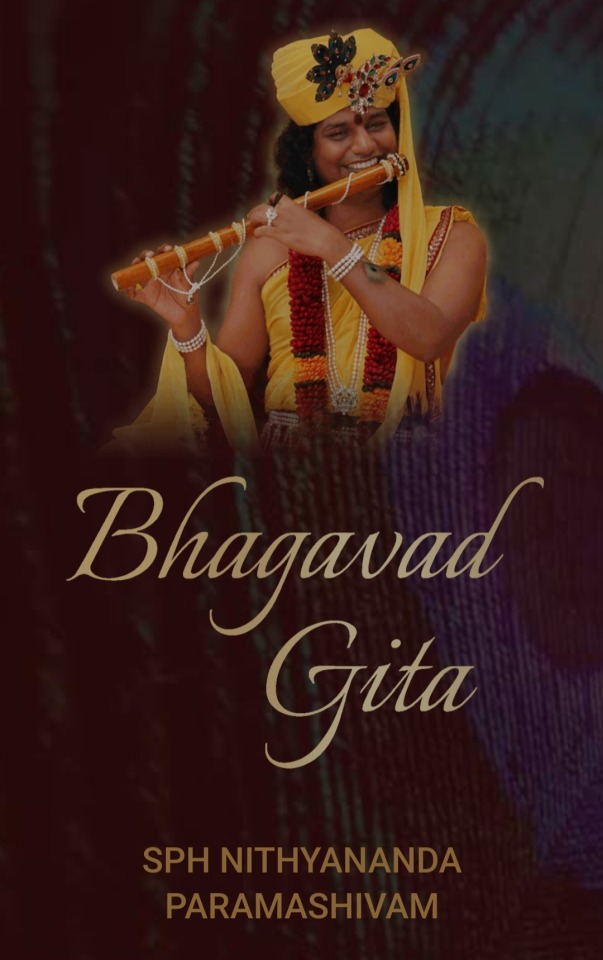
FREE Bhagavad Gita - Decoded Book - by the Supreme Pontiff of Hinduism for download:
https://kailaasa.org/bhagavadgita/
Download, Read & Share widely with all your friends & family 🙏🏽 BLESSINGS 🙏🏽🔱📿
#Kailasa #Nithyananda #BhagavadGita #Krishna #Arjuna
Kailasa's Sri Nithyananda Paramashivam & KAILASA's SPH JGM Nithyananda Paramashivam
2 notes
·
View notes
Text
BHAGAVAD GITA DECODED - SOLUTIONS FOR A SUCCESSFUL LIFE
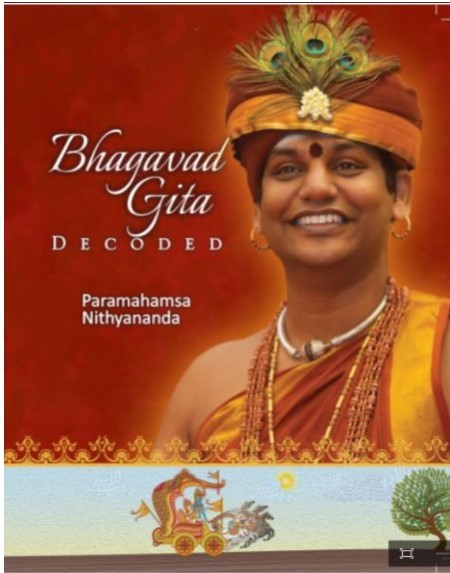
Receive this gift from The Supreme Pontiff of Hinduism Bhagavan Nithyananda Paramashivam - Bhagavad Gita Decoded available for FREE Download.
Any problem you can experience in life, you will find the solution here, and Swamiji has decoded the core powerful cognitions to help us better understand how to apply this knowledge nectar to our life.
Free download link: Https://Kailaasa.org/Bhagavadgita/
Bhagavat Gita Decoded by Bhagavan Nithyananda Paramashivam
Learn more about the SPH here - https://kailaasa.org/
#Nithyananda #Kailasa #booksm #VedicScriptures#lifesolutions #healthylifestyle #healthandwellness #wealthbuilding
#Nithyananda#Kailasa#booksm#VedicScriptures#lifesolutions#healthylifestyle#healthandwellness#wealthbuilding
2 notes
·
View notes
Text
Unveiling the Secrets of the Mahadev Book Id: A Comprehensive Guide
Introduction: Understanding Mahadev Book Id
Mahadev Book Id is a term that has garnered significant attention in recent times, especially among avid readers and enthusiasts of spiritual literature. In this comprehensive guide, we delve deep into the essence of Mahadev Book Id, exploring its significance, origins, and impact on readers worldwide.
The Origin Story
The origins of Mahadev Book Id trace back to ancient Hindu scriptures and mythology, where “Mahadev” translates to “Great God” or “Supreme Deity.” In Hinduism, Lord Shiva is often referred to as Mahadev, representing the embodiment of cosmic consciousness and the destroyer of evil.
Decoding the Symbolism
The term “Book Id” adds an intriguing layer of symbolism, suggesting a profound journey of knowledge and enlightenment encapsulated within the pages of a book. It signifies the quest for spiritual wisdom and the eternal search for truth and meaning in life.
Exploring the Themes
Mahadev Book Id encompasses a diverse range of themes, from spirituality and mysticism to philosophy and self-discovery. Through allegorical narratives, timeless teachings, and profound insights, it offers readers a transformative experience, guiding them on a path of inner exploration and self-realization.
The Impact on Readers
For readers immersed in the teachings of Mahadev Book Id, the impact is profound and far-reaching. It fosters a deeper understanding of life’s mysteries, instills a sense of purpose and meaning, and ignites a spiritual awakening that transcends the boundaries of time and space.
Key Teachings and Philosophies
Within the pages of Mahadev Book Id, readers encounter a treasure trove of ancient wisdom and timeless truths. From the significance of meditation and mindfulness to the concept of karma and dharma, each teaching resonates deeply with seekers on their spiritual journey.
Embracing the Path of Devotion
Devotion plays a central role in the teachings of Mahadev Book Id, inspiring readers to cultivate a profound sense of reverence and love for the divine. Through prayers, rituals, and acts of service, devotees deepen their connection with the divine and experience a profound sense of inner peace and fulfillment.
The Essence of Surrender
Surrender is a recurring theme in Mahadev Book Id, reminding readers of the importance of letting go and trusting in the divine plan. By relinquishing control and surrendering to the will of the universe, one can experience a profound sense of liberation and transcendence beyond the limitations of the ego.
Navigating Life’s Challenges
In the face of life’s challenges and adversities, the teachings of Mahadev Book Id serve as a guiding light, offering solace, strength, and resilience. By embracing the principles of detachment and equanimity, individuals can navigate through the turbulent waters of life with grace and composure.
Conclusion: Embarking on the Journey
As we conclude our exploration of Mahadev Book Id, we are reminded of the timeless wisdom and boundless potential contained within its pages. It is not merely a book but a sacred journey of self-discovery and spiritual evolution, inviting readers to embark on a transformative quest toward enlightenment and liberation.
Read More : https://mahadevbooks.ind.in/
0 notes
Text
A Symphony of Stories: Decoding the Magic of Hindu Baby Names
For Hindus, the arrival of a child is not just a biological event, but a cosmic dance of hope, blessings, and the echo of ancient lore. And at the heart of this celebration lies the naming ceremony, where a symphony of stories unravels with the bestowment of a name. Hindu baby names are not mere labels; they are threads woven into the tapestry of a child's destiny, carrying whispers of mythology, invocations of divine virtues, and aspirations for a fulfilling life.
Echoes of Gods and Heroes:
Hindu names often draw inspiration from the vibrant pantheon of deities. A child named Surya (sun god) is imbued with the promise of radiance and strength, while Durga (warrior goddess) carries the blessings of courage and resilience. These names are testaments to faith, serving as constant reminders of the divine forces that guide and protect.
Virtues as Guiding Lights:
Hindu names can be portals to ethical values. Names like Dharma (righteousness), Shanti (peace), and Daya (compassion) are not just labels, but guiding lights, reminding the child of the importance of living a life aligned with moral principles. They act as constant inspiration, encouraging them to embrace a path of goodness and understanding.
Nature's Whispers:
Hinduism celebrates the interconnectedness of life, and so it's no surprise that nature finds its expression in names. A child named Nila (blue) reflects the serenity of the sky, while Tara (star) embodies the light of hope and guidance. These names foster a sense of connection with the natural world, reminding the child of their place within the grand tapestry of existence.
Mythological Narratives:
Hindu names can be gateways to captivating myths and stories. A child named Ramayana (epic poem) carries the legacy of courage and devotion, while Draupadi (heroine) embodies strength and resilience. These names are not just labels; they are invitations to explore the rich tapestry of Hindu mythology, fostering cultural awareness and a sense of belonging.
Beyond Labels, a Celebration of Uniqueness:
Ultimately, a Hindu baby name is not just a static label; it's a celebration of the child's unique essence. Parents often consider astrological alignments, numerological significance, and personal preferences when choosing a name, ensuring it resonates with the child's individual spirit.
Finding Your Perfect Verse:
Choosing a Hindu baby name can be a daunting yet delightful journey. Parentz offer comprehensive lists of names with meanings, origins, and even numerological interpretations, helping you find the perfect verse for your little one's story. Remember, the most important aspect is to choose a name that resonates with you and your family, reflecting your hopes, aspirations, and the unique melody of your child's existence.
So, embark on this beautiful quest for the perfect Hindu baby names. Let it be a lullaby of love, a whisper of blessings, and the first line in the epic poem of your child's life. May this name guide them towards a path of fulfillment, righteousness, and a connection to the divine.
0 notes
Text
What is 1 Face Mukhi Rudraksha?
Face Mukhi Rudraksha is a rare and potent bead with a single natural cleft or facet on its surface. Revered in Hinduism, it is believed to embody the energy of Lord Shiva, the supreme deity. This divine seed is often associated with enlightenment, meditation, and profound spiritual experiences.
Decoding Authenticity
The Importance of Authenticity
In the digital era, the quest for authenticity is paramount, especially when it comes to spiritual artifacts. Our commitment to delivering genuine 1 Face Mukhi Rudraksha Price sets us apart. Each bead undergoes meticulous testing to ensure it carries the pure vibrations essential for spiritual growth.
Why Choose Us for Your Purchase?
Quality Assurance: Our stringent quality control measures guarantee an authentic and powerful 1 Face Mukhi Rudraksha.
Transparent Sourcing: We provide detailed information on the origin and journey of each bead, fostering transparency and trust.
Expert Guidance: Our team of spiritual experts is at your service, offering guidance on the selection and usage of the sacred bead.
The Spiritual Significance
Empowering Your Spiritual Journey
Embark on a transformative odyssey with the 1 Face Mukhi Rudraksha, as it:
Amplifies Meditation: The single facet symbolizes concentration, aiding meditation and enhancing your spiritual practice.
Balances Energies: Known for harmonizing mind, body, and spirit, the bead brings equilibrium to your life.
Divine Connection: Establish a profound connection with the divine, fostering inner peace and wisdom.
0 notes
Text
Jamboo Dweep
Description of Jambudweep; Vedic Cosmology
According to Vedic geography of terrestrial world, the earthly plane is much larger than we think. And we live in the smallest plane. The seven islands of Jambu, Plakṣa, Śālmali, Kuś, Kraunch, Śāka and the seventh Puṣkar are surrounded on all sides by the seven oceans of salt water, sugarcane juice, wine, ghee, curd, milk and fresh water. Here, these…

View On WordPress
#ANCIENT INDIA#जंबूदीप#DECODING HINDUISM#HINDU DHARMA#hindu scriptures#HINDUISM#HINDUISM AND COSMOLOGY#HINDUISM SCRIPTURES#HISTORY OF INDIA#HISTORY OF INDIA/BHARAT#INDIA#RAMAYAN#sanatan dharma#SRIMAD-BHAGVAT PURAN#UPNISHAD#VEDAS
1 note
·
View note
Text
Decoding Temple Dress Codes in Hinduism: Significance, Necessity, and Unraveling Mysteries
Decoding Temple Dress Codes in Hinduism: Significance, Necessity, and Unraveling Mysteries #Hinduism #TempleEtiquette #Spirituality #CulturalTraditions #DressCode #AncientWisdom
Have you ever wondered why some temples in India have dress codes for visitors? What is the significance, necessity, and history behind this practice? What does ancient Hindu literature say about it? And are there any temples without any dress code at all? In this article, we will explore these questions and more, as we learn about the temple dress code in Hinduism.
If you are planning to visit…

View On WordPress
#cultural diversity#Devotion#Hindu Traditions#Hinduism#Sanctity#spiritual practices#Temple Dress Code
0 notes
Text
Petal Poetry: Stories Told by Blooms in Nature's Garden
In the vast tapestry of nature, flowers emerge as delicate storytellers, weaving tales through their petals and colors. Each bloom possesses a unique narrative, a silent poetry that speaks to those who take the time to listen. Welcome to the enchanting world of Petal Poetry, where the language of flowers unfolds in the magical garden of nature.
The Language of Blooms: A Floral Alphabet
In this captivating garden, every petal whispers a different story. From the vibrant red of a rose symbolizing love to the serene blue of forget-me-nots, flowers communicate through a silent language understood by bees, butterflies, and those attuned to the poetry of nature. Petal Poetry embraces this floral alphabet, decoding the messages carried by blossoms that paint the world in hues of emotion and meaning.
Dances of Color: Nature's Ballet
As the seasons change, so does the garden's dance of color. Spring heralds the arrival of tulips and daffodils, adorned in pastel tones, announcing the rebirth of life. Summer brings forth a riot of colors as sunflowers, dahlias, and zinnias sway in the warmth of the sun. Autumn paints the garden with the fiery hues of marigolds and chrysanthemums, while winter whispers through the delicate petals of snowdrops. Petal Poetry celebrates the ever-changing choreography of nature's ballet, where each bloom takes its turn in the spotlight.
Floral Fragrance: A Symphony for the Senses
Beyond their visual allure, flowers compose a symphony for the senses with their intoxicating fragrances. Jasmine whispers tales of moonlit nights, while lavender lulls with stories of peaceful fields. The perfume of roses carries the essence of timeless romance, and lilacs transport us to a garden of nostalgia. Petal Poetry invites us to close our eyes, inhale deeply, and let the fragrant verses of nature's garden unfold.
Seasons of Bloom: A Lifelong Tale
A flower's journey is a cyclical narrative, a story told through the changing seasons. Petal Poetry recognizes the fleeting beauty of blossoms, urging us to appreciate the ephemeral nature of life. From the first bud of spring to the final bloom of autumn, each flower embraces its moment in the spotlight, contributing to the eternal tale of nature's garden.
Cultural Bouquets: Blossoms in Tradition
Petal Poetry is not confined to the borders of a single garden; it extends across cultures and traditions. From the cherry blossoms of Japan symbolizing the transience of life to the lotus in Hinduism representing purity and enlightenment, flowers play integral roles in cultural narratives worldwide. This global bouquet enriches Petal Poetry with diverse tales that transcend borders and connect humanity through the shared language of blooms.
In the garden of Petal Poetry, every blossom is a verse, every color a hue in a vibrant palette of emotions. As we wander through this enchanting landscape, let us listen to the stories told by nature's blooms, for in their silent poetry, we find a reflection of the beauty, resilience, and interconnectedness that define the tapestry of life.
0 notes
Text

Decode The Mystery Of Your Love Life!
Get A Detailed Couple Compatibility Report Based On Vedic Astrology Today.
.
.
.
.
.
#astrology #vedicastrology #vedicastrologer #vedicastrology🌞🌙🌎☀️🙌 #ancientindia #hinduism #astrologer #relationships #marriage #jothishi #jyotish #jyotishshastra #jyotishastrology #saturntransit #zodiacsigns #navamshachart #lagnachart
0 notes
Text
The Spiritual Meaning of Right Ear Ringing: Decoding its Messages - Impeccable Nest
Right ear ringing can also symbolize positive change. No matter the interpretation, this phenomenon is often seen as a sign that good things are on the horizon, and you should stay open to new opportunities. Right-ear-ringing spiritual meaning involves understanding the various interpretations across different cultures and belief systems. Here are some common interpretations: In Christian beliefs, right ear ringing is considered as a sign of spiritual guidance and divine intervention. It is interpreted as angels trying to communicate with you or alerting you of some impending danger. Buddhism believes that the right ear is responsible for receiving positive energy from the universe, and ear ringing is a sign that your body is receiving such energies. According to Hinduism, the right ear is associated with knowledge and wisdom. Therefore, right ear ringing spiritual meaning is considered to be a good omen, indicating that you will receive - 6quf81osl2
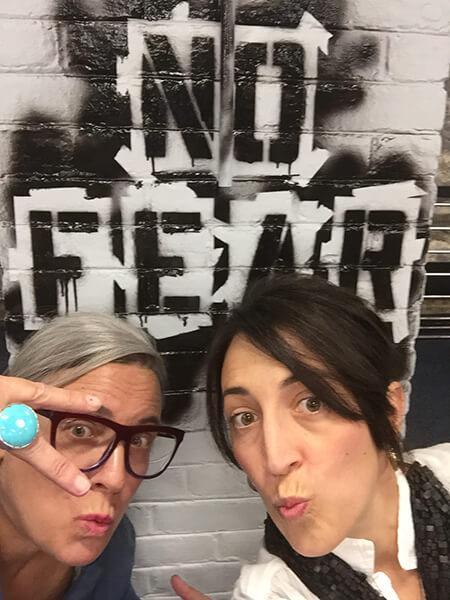
0 notes